Chickweed
 click to enlarge |
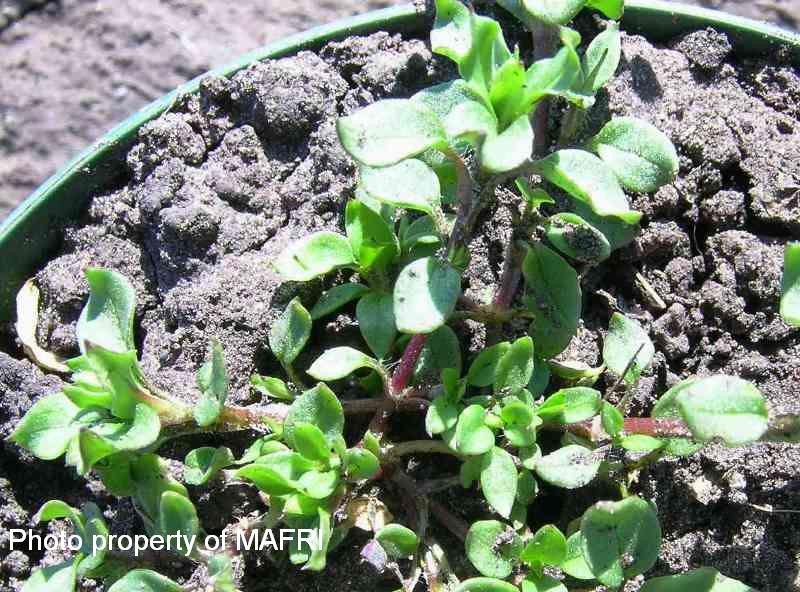 |
 |
 |
 |
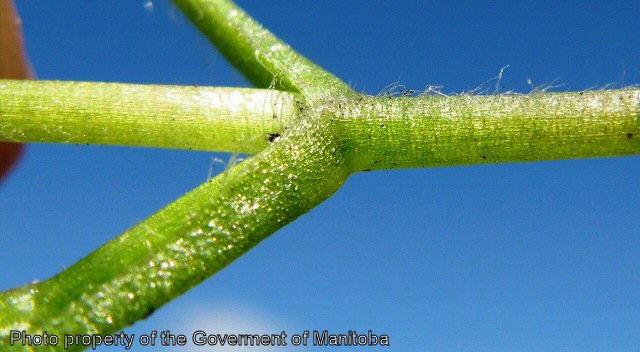 |
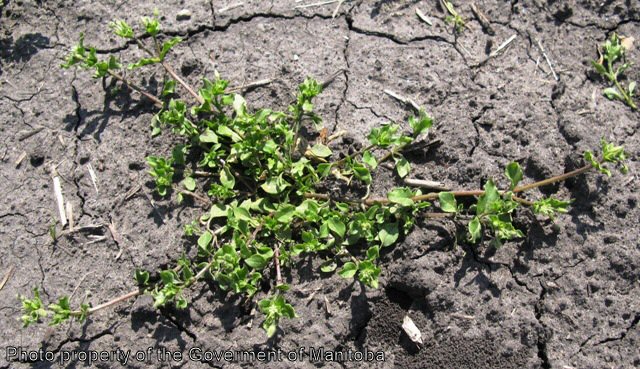 |
 |
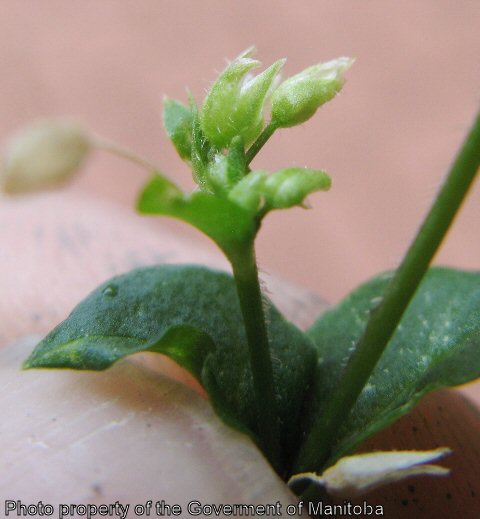 |
|
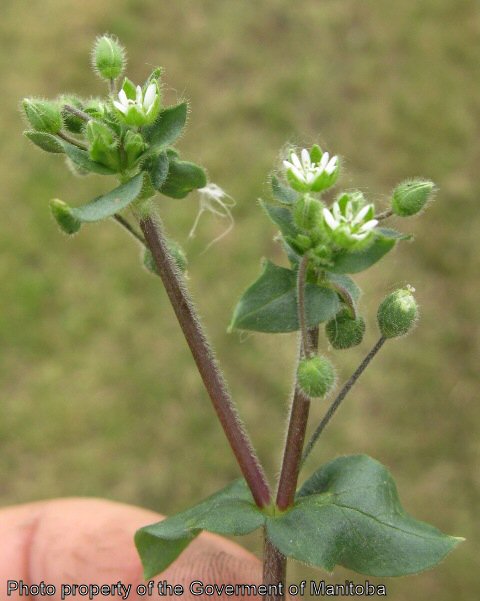 |
 |
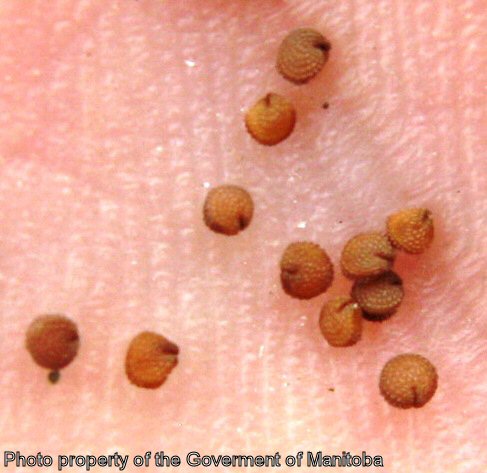 |
Biology
An annual or winter annual, reproducing by seeds and stolons. The stems are prostrate and spreading, 5-50 cm long, swollen at the nodes, and lined with fine hairs. The leaves are opposite, oval with pointed tips, 1 cm wide, lower leaves have hairy petioles while the upper leaves are sessile. The flowers are white, 5 mm in diameter, 5 deeply divided petals, and occur on axillary or terminal cymes with short peduncles. This weed can flower through most of the year and is a very prolific seed producer. The seeds are 1.2 mm in diameter, brownish-orange, covered with 5-6 rows of small bumps, and borne in a capsule.
Chickweed grows best on moist, heavy, nitrogen rich soils at optimum constant temperatures of 12 -20°C. It is very sensitive to drought and is not a problem in drier areas. Chickweed can germinate throughout the year but has two main flushes; one is early spring while the other is late fall.
This weed is shade tolerant enabling it to compete well with desirable plant species like cereal and oilseed crops. The seed can accumulate toxic levels of nitrogen which can cause digestive disorders to grazing animals. This weed can also delay crop drying and tangle in harvest equipment.
Scouting Techniques
Take a minimum of 20 weed counts across the field. Check moist areas especially when temperatures are cool for patches of this weed because it is able to grow at lower temperatures than other plant species.
Effects On Crop Quality
A contaminant in seeds of wheat, barley, rye, oats, canola, mustard, timothy, swede, sugar beets, and kale. Can indirectly affect the development of field crops by harbouring viruses, fungi, aphids, and nematodes.
Threshold/Yield Loss
Yield losses of 66-80% in barley have been reported as a result of chickweed competing for root space.
Control Tips
- close mowing, population of viable seeds in the soil is greatly reduced
- Group 2, 4, 5, & 7 herbicides
- Group 9 &10 in herbicide tolerant crops
- good drainage, effective control
